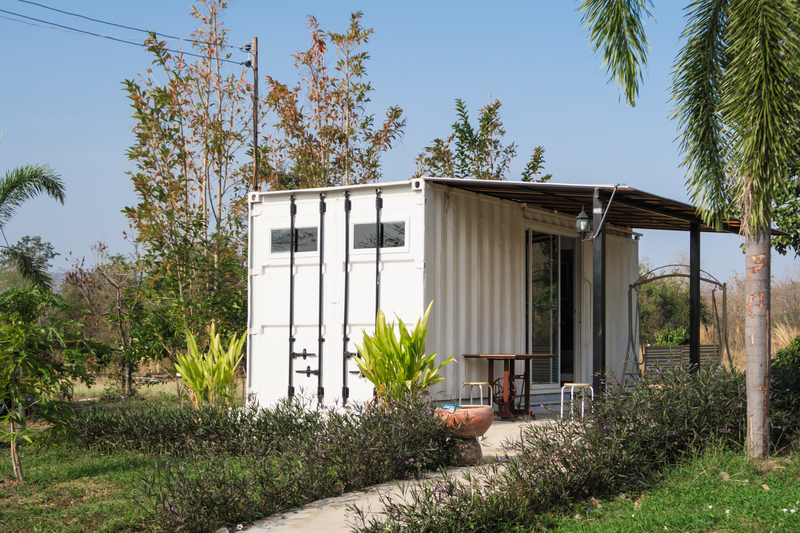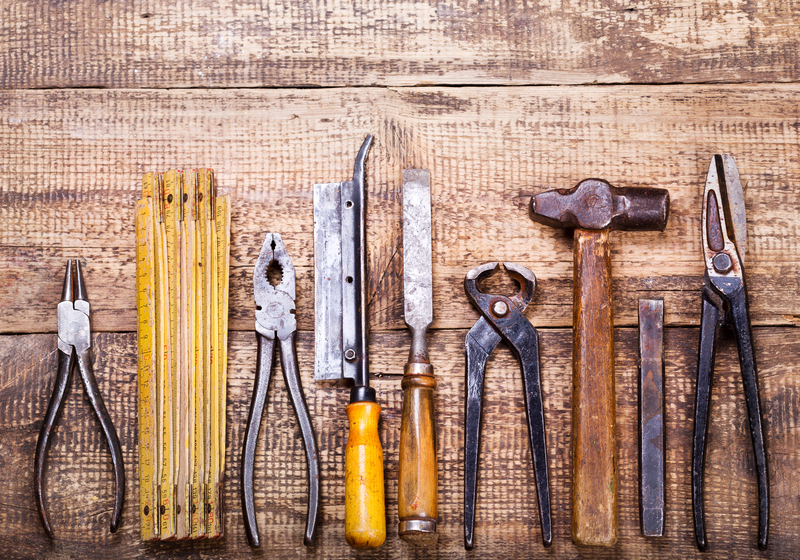Plan Your Pot and Pan Recycling Today with These Tips
If you've accumulated a collection of old cookware, you may be wondering how to recycle pots and pans responsibly. Maybe your nonstick skillet is scratched, your favorite saucepan has lost its handle, or you simply want to replace your entire set. Rather than throwing them in the trash, consider eco-friendly options. This comprehensive guide will walk you through everything you need to know about planning your pot and pan recycling for a greener tomorrow!
Why Should You Recycle Pots and Pans?
Every year, millions of cookware items end up in landfills, unnecessarily contributing to environmental pollution. Pots and pans recycling helps to conserve resources and reduce waste. Many pots and pans contain metals such as stainless steel, aluminum, copper, and even cast iron--materials that can be efficiently recycled and reused.
- Resource conservation: Recycling cookware saves natural resources by reusing tall metals.
- Less landfill waste: Divert tons of metal from landfills and help mitigate environmental pollution.
- Lower greenhouse gas emissions: Reprocessing metal uses significantly less energy than mining virgin materials.
- Support for the recycling industry: Demand for recycled materials helps sustain local recycling businesses.
By planning your pan recycling well, you not only declutter but also make a positive difference for the planet!

What Types of Pots and Pans Can Be Recycled?
Many kinds of cookware are eligible for recycling. Here are the most common types:
- Stainless Steel: Durable and highly recyclable. Most recycling centers accept stainless steel cookware.
- Aluminum: Lightweight pans are often made of aluminum, which is easily processed and reformed.
- Copper: Highly valued by scrap metal facilities due to copper's value and recyclability.
- Cast Iron: Heavy and sturdy, cast iron pans and skillets are accepted at most scrap yards.
- Enamel-Coated: Metal with a glassy coating can sometimes be recycled, though you should check with your local facility.
- Nonstick (Teflon-coated): Trickier to recycle due to chemicals, but see the tips below for specific guidance.
- Ceramic and Glass: These usually can't be recycled with metals, but other options for disposal exist.
Tip: Always remove any non-metal parts (plastic, rubber, lids) before bringing your cookware for recycling.
How to Start Planning Your Cookware Recycling
Planning ahead ensures your old pots and pans are recycled or reused efficiently. Here are essential steps to create an eco-friendly plan:
1. Take Inventory
- Examine your kitchen cabinets and drawers.
- Make a list of cookware you no longer want or that are past their prime.
2. Assess Condition
- Pots and pans in good condition can be donated or sold.
- Heavily damaged or warped items are best suited for recycling or upcycling.
3. Separate by Material
- Group items into categories: stainless steel, aluminum, cast iron, copper, nonstick, and ceramic/glass.
- This will help you find the best recycling or donation outlet.
4. Find Local Recycling Centers
- Contact your local municipal recycling program--many offer metal recycling drop-off points.
- Search online for "scrap metal recycling near me."
- Check with big box retailers--some, like Best Buy, have take-back programs for cookware.
5. Follow Community Guidelines
- Every recycling program has unique requirements--some may take only certain metals, or require removal of plastic handles/lids.
Where and How to Recycle Pots and Pans
Scrap Metal Yards
Scrap yards are one of the best destinations for metal cookware, including damaged or worn-out pots and pans.
- What to bring: Clean and dry metal cookware, preferably with non-metal parts removed.
- Accepted materials: Stainless steel, aluminum, copper, and cast iron are all in demand at scrap metal facilities.
- Inquire first: Call ahead to check if they accept nonstick or enamel-coated pans.
Municipal or City-Based Recycling Programs
Many cities and towns have bulk recycling days or metal drop-off events. Here's what to do:
- Visit your city's website or recycling calendar for upcoming collection events.
- Some centers offer curbside pickup for metal goods, but check whether cookware is allowed.
Retailer Take-Back Programs
- Some major kitchenware retailers offer recycling for old pots and pans when you buy new ones.
- Ask at stores like Williams Sonoma, Sur La Table, or local kitchen boutiques.
- Large chains may occasionally sponsor cookware recycling events.
Mail-In Recycling Programs
- Certain brands (for example, TerraCycle or GreenPan) may offer mail-in programs for Teflon or specialty materials.
- Check their websites for shipping instructions and requirements.
Donation: A Planet-Friendly Alternative
If your pots and pans are still usable, donation is an excellent way to promote reuse and help those in need. Many organizations accept gently used cookware:
- Local shelters and food banks: Contact homeless shelters, women's refuges, or soup kitchens.
- Thrift stores: Goodwill, Salvation Army, Habitat ReStores, and local charity shops often welcome cookware in good condition.
- Community organizations: Schools, churches, and youth groups sometimes need kitchen equipment for classes or community meals.
- Online platforms: List your items on Freecycle, Facebook Marketplace, Craigslist, or Nextdoor for local reuse.
Remember, donation should only be considered if the cookware is safe, not chipped, cracked, or deformed, and thoroughly cleaned.
Upcycling: Creative Ways to Repurpose Old Pots and Pans
If traditional recycling isn't possible, or if you're feeling crafty, upcycling is a wonderful way to give old cookware a second life. Here are creative upcycling ideas:
- Plant holders: Turn old pans or stock pots into quirky planters for your garden or balcony.
- Bird baths or feeders: Suspend upside-down pans from a tree for a rustic bird bath or feeder.
- Garden art: Paint or mosaic old cookware for use as unique outdoor decorations.
- Storage: Use pans as storage bins for art supplies, tools, or knick-knacks.
- Wall decor: Hang decorative pans on the wall for a vintage, industrial kitchen look.
Let your imagination run wild! Upcycling not only reduces waste but can add a personal touch to your home or garden.
Disposing of Nonstick, Teflon, or Ceramic-Coated Pans
Nonstick and Teflon cookware raises unique challenges due to its chemical coatings, which aren't accepted at most scrap metal yards or regular municipal recycling centers. Here's how to dispose of them responsibly:
- Contact the manufacturer: Certain brands offer take-back or mail-in recycling programs for their products.
- Remove coatings: If you can separate the metal base from the Teflon/ceramic coating, the base may be recyclable.
- Last resort: If no programs are available, nonstick pans may need to be disposed of with regular household garbage.
For safety, avoid using nonstick pans with flaking coatings--these can release toxic particles into your food.
Essential Tips to Plan Your Pot and Pan Recycling
- Clean your cookware before recycling: Remove food residue and thoroughly wash the items to avoid contamination.
- Take apart what you can: Remove plastic handles, knobs, and lids to separate metals for easier processing.
- Stay informed: Recycling guidelines are always changing--check your local requirements each time you plan to recycle cookware.
- Look for community recycling events: Earth Day or local "Clean-Up" days often have special drop-offs for bulky kitchen items.
- Document your donation for taxes: If donating, keep a list for your records and to claim potential tax deductions.
Quick Checklist: Steps to Successful Pan and Pot Recycling
- Gather all unwanted or damaged cookware
- Inspect and sort by type of metal or coating
- Research recycling and donation programs in your area
- Clean and prep items by removing non-metal parts
- Transport items to the appropriate center or charity
- Share your story and encourage others to recycle or donate their pots and pans!
The Environmental Impact of Responsible Pot and Pan Disposal
Properly disposing of cookware significantly reduces your household's contribution to landfill waste and conserves natural resources. For example, recycling aluminum requires only 5% of the energy used for creating new aluminum. Stainless steel and copper similarly offer enormous savings when recycled.
In the U.S. alone, it's estimated that kitchenware recycling could divert thousands of tons of metal from landfills every year. When you plan your pan recycling ahead of time and inform your network, you multiply your positive environmental impact.
Frequently Asked Questions about Cookware Recycling
Can I put old pots and pans in the regular curbside recycling bin?
Most residential recycling bins do not accept large metal objects or cookware. Always check with your waste management provider before adding pots and pans to your bin.
How can I tell what type of metal my pan is?
Look for labels stamped on the bottom of the pan (SS for stainless steel, AL for aluminum, etc). If you're unsure, a magnet can help: it will stick to steel, but not to aluminum or copper.
Are nonstick pans bad for the environment?
While nonstick coatings have improved, they are still a challenge to recycle. If possible, opt for pans with removable coatings or consider brands that offer environmentally friendly take-back programs.
How do I recycle cast iron pans?
Cast iron is a valuable recyclable material. Most scrap metal facilities welcome it with open arms. Alternatively, clean and re-season old cast iron pans and donate them--they can last generations!
Should I remove handles and lids before recycling?
Yes! Most facilities prefer that non-metal parts like plastic handles, knobs, and glass lids be removed to streamline the recycling process.

Spreading the Word: Encourage Pot and Pan Recycling
The simple act of responsibly recycling or donating your old kitchenware can have a ripple effect in your community. Educate your family and friends on the benefits of pan and pot recycling. Share resources, helpful tips, and your personal experience--it only takes a few minutes to spread eco-friendly awareness!
Conclusion: Plan Your Pot and Pan Recycling Today
With these comprehensive tips, planning your cookware recycling is easy and impactful. Whether you choose metal recycling, donation, upcycling or a retailer's take-back program, each step you take prevents valuable materials from being wasted.
Remember: Every pot and pan recycled or reused makes a difference! Gather your unwanted cookware, check community resources, and recycle thoughtfully. The environment--and future generations--will thank you.
Start planning your pot and pan recycling today, and inspire others in your home and neighborhood to do the same. Together, we can make waste a thing of the past and create a more sustainable world, one pot and pan at a time.